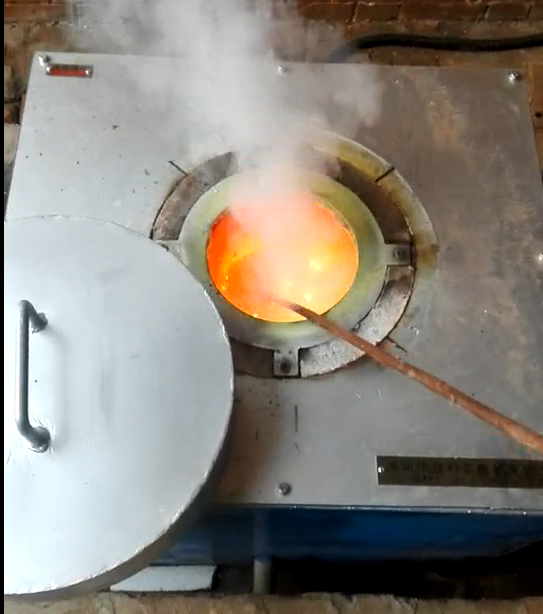Electric aluminum melting furnace
Electric aluminum furnace: deep integration of technological innovation and industrial application
As the "silver blood" of modern industry, the innovation of aluminum smelting technology directly promotes the progress of aerospace, automobile manufacturing, electronics industry and other fields. With its high efficiency, environmental protection and precision, electric aluminum furnace is gradually replacing traditional gas furnace and becoming the core equipment in the field of aluminum processing. This article will analyze how this technology reshapes the ecological pattern of the aluminum industry from the dimensions of technical principles, equipment structure, process advantages and future trends.
- Technical principles of electric aluminum furnace
The core of electric aluminum furnace is to efficiently convert electrical energy into thermal energy, and its technical route is mainly divided into two categories: resistance heating and induction heating.
- Principle of resistance heating
The resistance electric furnace converts electrical energy into radiant heat through high-resistance alloy heating elements (such as silicon carbide) and directly acts on aluminum materials. Taking Schaefer Group's wet bath electric furnace as an example, its silicon carbon rod element only requires 0.20-0.23 kWh of electricity per pound of aluminum, and the cold start efficiency is 30% higher than that of traditional furnaces.
- Induction heating principle
The induction furnace is based on the electromagnetic induction effect: the alternating current generates a high-frequency magnetic field through the coil, and the aluminum material generates heat due to the eddy current effect and resistance loss. For example, the 5-ton induction furnace of APS uses a 1.8kHz medium-frequency power supply with a penetration depth of about 5mm, combined with electromagnetic stirring technology to ensure uniform composition of the molten pool and reduce the metal oxidation rate to less than 0.5%.
- Equipment structure and key technologies
The modular design of modern electric aluminum furnaces takes into account efficiency and flexibility. Its core components include:
- Power supply system
IGBT inverter technology has become the mainstream, and compared with traditional thyristors, the power conversion efficiency is increased by 15%-20%. For example, the IGBT induction furnace of a manufacturer in Shandong adopts a dual three-phase 12-pulse design with a power factor of 0.95 and an energy consumption of ≤520kWh per ton of aluminum.
- Furnace lining material
Multi-layer composite refractory materials are the key. The inner layer usually uses alumina-silicon carbide composite materials with a temperature resistance of 1700℃. The aluminum borate lining developed by ABP in Germany has a 40% higher corrosion resistance and a service life of more than 300 furnaces.
- Tilting mechanism
The hydraulic servo system achieves 0-95° precise flipping, with an angle error of <0.1°. With the splash guard design, the metal liquid transfer loss rate is <0.3%. The hydraulic tilting furnace of Kalyani in India adopts dual pump control, and the pouring speed can be adjusted in the range of 1-5kg/s.
- Intelligent control system
Integrates infrared temperature measurement, vacuum degassing and composition analysis modules. Thermtronix's Fleet Commander system supports PLC control, and the 7-day timed preheating function can reduce startup energy consumption by 18%.
III. Process advantages and industrial value
The electric aluminum furnace shows multiple advantages in terms of efficiency, environmental protection and quality:
- Energy efficiency revolution
The thermal efficiency of the induction furnace reaches 65%-85%, far exceeding the 30%-55% of the gas furnace. The DC-1000 electric furnace of Rayteq Company in the United States melts 1,000 pounds of aluminum per hour, with a unit energy consumption 40% lower than that of traditional furnaces, and an annual reduction of 460 tons of CO₂.
- Improved metal quality
Vacuum melting technology can control the oxygen content of aluminum liquid to below 10ppm. Patent CN104264003A shows that after adding rare elements such as scandium (Sc) and tantalum (Ta), the tensile strength of aluminum alloy wire is increased to 250MPa, and the conductivity remains at 62%IACS.
- Contribution to the circular economy
Electric furnaces are highly compatible with scrap aluminum, with a melting loss rate of <1%. A recycled aluminum company in Jiangxi uses a 10-ton induction furnace to process 32,000 tons of electronic waste annually, with a metal recovery rate of over 98%.
IV. Technical Challenges and Innovation Directions
Despite its significant advantages, electric aluminum furnaces still need to break through the following bottlenecks:
- Lining Life Optimization
Lining cracks caused by aluminum liquid penetration are still a problem. The nano-coating technology developed by QIT forms an Al₂O₃-TiC composite layer on the surface of the lining through vapor deposition, which improves the anti-permeability by 50%.
- Intelligent Upgrade
Digital twin technology has begun to be applied to smelting process simulation. For example, Elka Mehr Kimiya implanted AI algorithms into the control system to predict the flow state of the molten pool in real time, reducing the defect rate by 12%.
- Zero Carbon Exploration
Swiss ABB tested photovoltaic direct-drive electric furnaces, combined with molten salt energy storage systems, to achieve zero-carbon smelting in off-grid conditions. Preliminary data show that carbon emissions per ton of aluminum can be reduced by 85%.
V. Future Trends and Industry Impact
The evolution of electric aluminum furnaces presents three major trends:
- Distributed manufacturing: containerized small furnaces (such as the Rayteq DT series) support on-site smelting and reduce metal transportation losses.
- Material genome engineering: High-throughput computing accelerates the development of new refractory materials. The U.S. Department of Energy plans to increase the life of furnace linings to 500 furnaces by 2030.
- Human-machine collaboration: AR remote operating systems (such as Thermtronix's IDMS) enable a single worker to manage multiple devices, increasing operation and maintenance efficiency by 30%.
